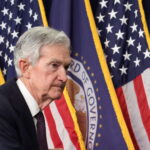
The U.S. central bank, to President Donald Trump’s chagrin, will likely leave interest rates unchanged at a policy meeting this week, but that’s not to say there won’t be a vigorous debate, with one if not two Federal Reserve governors possibly casting a rare dissent in support of lower borrowing costs.
The majority of Fed policymakers, though, remain concerned that Trump’s tariffs could undo progress on bringing inflation back to the central bank’s 2% goal, outweighing for now worries about the labor market.
The trade deal struck between the U.S. and Japan last week, with tariffs set at 15%, and reported progress for a similar rate in talks with the European Union make it more likely that import duties overall will end up well below the punishing levels Trump announced on his April 2 “Liberation Day.”
Even so, U.S. tariffs are at their highest level in 90 years, and the effects are starting to show up in household purchases. A surge in prices of goods like furnishings and apparel helped drive overall consumer inflation to an annualized 3.5% pace in June.
So soon after a bout of 40-year-high inflation, policymakers fear fast-rising prices could “freak out” households, as Chicago Fed President Austan Goolsbee sometimes phrases it, triggering a wider inflationary spiral.
While Fed Chair Jerome Powell says that is only one of many possible scenarios, he has argued the central bank can wait to learn more before adjusting rates, especially with a 4.1% unemployment rate near or below estimates of full employment.
Click this link for the original source of this article.
Author: Dillon B
This content is courtesy of, and owned and copyrighted by, https://www.offthepress.com and its author. This content is made available by use of the public RSS feed offered by the host site and is used for educational purposes only. If you are the author or represent the host site and would like this content removed now and in the future, please contact USSANews.com using the email address in the Contact page found in the website menu.







